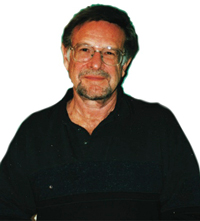
When the Town of Leaside was officially incorporated in 1913, the area was fully planned and laid out, but there were only 43 people and five farms. By 1916, with World War 1 underway, thousands of workers came every day to the industrial area, arriving by train to the Canada Wire munitions plant. But there still were very few residents. Local resident and history buff John Naulls thinks there was one very good reason that no one talked about much.
Leaside Mayor R. P. Ormsby had a problem. It was September, 1919 and the fledgling town council was trying, without success, to get the attention of the City of Toronto.
A local sewage disposal plant was literally stinking up the neighbourhood. Raw sewage in an open ditch was floating within 100 feet of the village’s first little public school, at the corner of McRae and Laird.
It was enough to discourage anyone from living in the town, at that time just seven years old. In fact, Leaside remained sparsely populated until late in the 1930s.
“The general opinion for lack of interest in moving to Leaside has been to blame it on isolation and the war,” says Naulls, “but if you read the town council minutes you’ll discover another possible problem —the town simply stunk!”
The “nuisance” (as it was called) was first mentioned in 1916 but was not solved until 10 years later.
“There was a really bad smell,” stated the 1916 minutes. “Warm weather will create a nuisance.”
At that time, there was a sewage plant at the corner of Bayview and Soudan (the site of the current Parker’s Cleaners).
Wastewater from the facility travelled to the Leaside Creek (at Bayview and Eglinton), through Talbot Park to Sutherland Dr., where it changed course and emerged at McRae and Laird. It continued through the industrial area past the one factory, Canada Wire, where it flowed into an unground sewer on the way to the Don River.
But first it had to pass the schoolhouse.
“In fact, the creek had even been dug out to form an open ditch from Sutherland Dr. to Laird, right by the school,” says Naulls.
“The smell overpowered the residents.”
By 1920, local residents had officially complained about the smell to town council, and the health officer for the area, Dr. Hugh Alexander Elliott, took the matter up with the province. An angry residents’ petition followed in 1923, but still no action to remove the offending disposal plant. Dr. Elliott decided to push the matter by gathering evidence.
“To the horror of J.D. Bell, the local sanitary inspector, he was asked to keep a close check on the plant’s operation and where possible, collect samples of raw sewage,” says Naulls.
Fortunately for Bell, the Board of Health stepped in and agreed that yes, there was enough evidence that the plant had to be removed, without actual bags of sewage as proof.
In the meantime, the town had a new mayor, Herbert Horsfall, one of the founders of Canada Wire and Cable.
Determined to find a solution, Horsfall made a deal with the city. If they agreed to close down the Soudan plant, Leaside would give them their original sewage plant in the valley just south of Millwood and Laird (damaged years earlier in a landslide).
“The council minutes in 1925 tell us that ‘the Toronto Board of Health is to remove that objectionable place as soon as possible and some compensation is to be paid to the town,’” says Naulls.
Although no one’s sure if any compensation was paid, Leaside accepted the agreement and a new plant went into operation in 1927.
The plant is still in operation today, turning sewage into clean water for 85 years.


